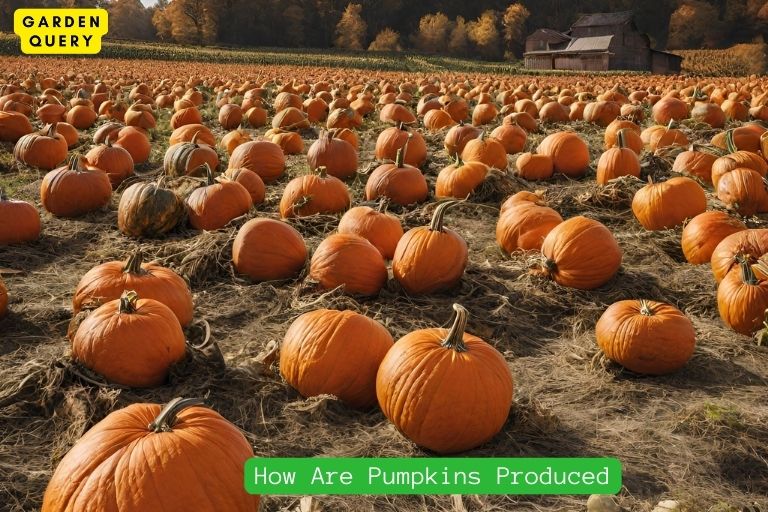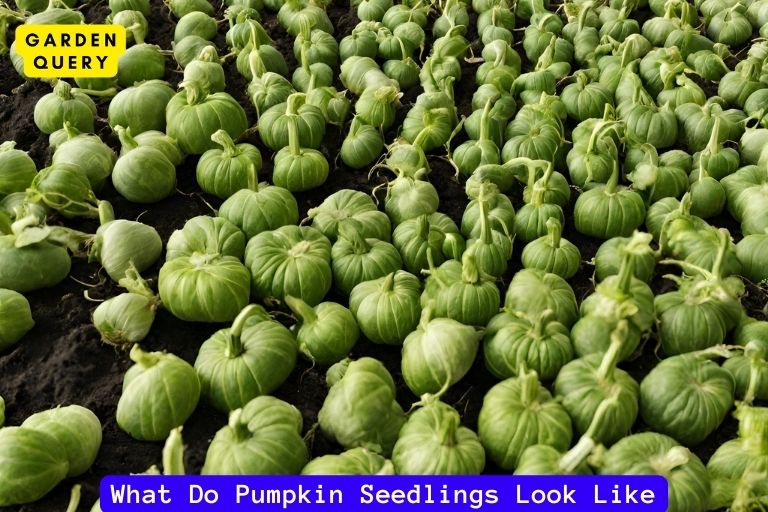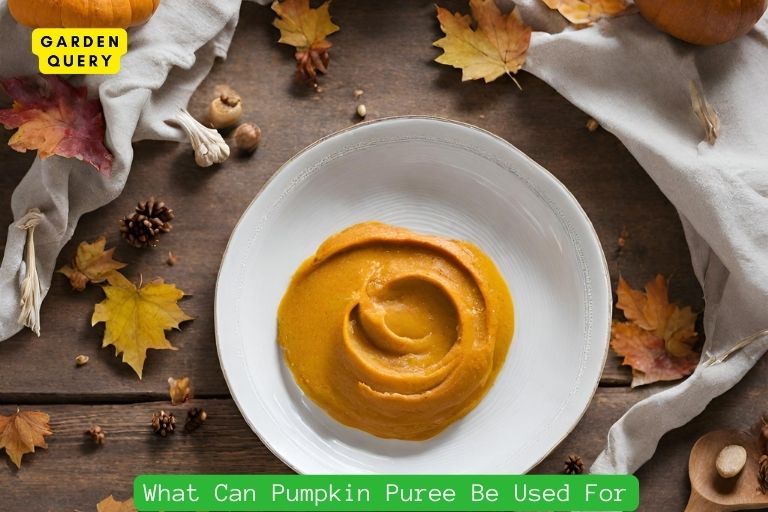How Are Pumpkins Produced?
Pumpkins are produced through the growth cycle of pumpkin plants, originating from seeds, germinating into vines, flowering, and ultimately yielding the well-known pumpkin fruits.
The production of pumpkins starts with the planting of seeds in suitable soil, requiring warmth and proper moisture for germination. Once sprouted, the seeds grow into sprawling vines that develop flowers.
These flowers undergo pollination, typically facilitated by bees, leading to the formation of pumpkin fruits. Throughout the growth process, factors like sunlight, water, and nutrients contribute to the development of healthy pumpkins ready for harvest.
Key Takeaway
Pumpkin Production
Overview of pumpkin farming
Pumpkins are a popular crop that is not only grown for their decorative purposes during the fall season but also for consumption. Pumpkin farming requires careful planning and attention to detail to ensure a successful harvest. Here is an overview of the process of pumpkin production.

- Choosing the right variety: There are various types of pumpkins, each with its own unique characteristics. Farmers need to consider factors such as the climate, soil conditions, and market demand when selecting the variety to plant.
- Preparing the soil: Pumpkins thrive in well-drained soil with a pH level between 6.0 and 7.5. Farmers need to prepare the soil by removing any weeds, tilling the land, and incorporating organic matter to improve fertility.
- Sowing seeds: The seeds are typically sown directly into the soil once the temperatures are consistently above 60°F (15°C). The recommended spacing between the plants is around 2-4 feet apart, depending on the variety.
- Providing proper care: Pumpkins require regular watering, especially during dry periods. It is essential to water the plants at ground level to prevent diseases. Additionally, farmers need to monitor for pests and diseases and take appropriate measures to protect the crop.
- Harvesting: The timing of the harvest depends on the purpose of the pumpkins. For decorative purposes, they are typically harvested when the skin is fully colored and the stem is dry. For culinary purposes, pumpkins are allowed to fully mature and develop their sweet flavor.
Environmental factors affecting pumpkin growth
Several environmental factors can influence the growth and development of pumpkins. Here are some key considerations for successful pumpkin production.
- Temperature: Pumpkins require warm temperatures to thrive. The ideal temperature range for pumpkin growth is between 70°F (21°C) and 90°F (32°C). Cold temperatures can stunt growth, while excessively high temperatures can lead to poor fruit set.
- Sunlight: Pumpkins are sun-loving plants. They require at least 6-8 hours of direct sunlight per day for optimal growth and fruit development. Insufficient sunlight can result in weak plants and decrease the quality and yield of the pumpkins.
- Soil fertility: Pumpkins are heavy feeders and require fertile soil rich in organic matter. Farmers need to ensure that the soil is adequately amended with compost or well-rotted manure to provide the necessary nutrients for healthy plant growth.
- Water: Pumpkins have high water requirements, especially during the flowering and fruiting stages. Adequate irrigation is crucial to prevent water stress, which can result in wilting, reduced fruit size, and poor quality.
- Pest and disease management: Pumpkins are susceptible to various pests and diseases, including squash bugs, powdery mildew, and vine borers. Farmers need to implement proper pest and disease management practices, such as regular scouting, crop rotation, and the use of organic or chemical controls.
In conclusion, pumpkin production requires careful planning and attention to environmental factors such as temperature, sunlight, soil fertility, water, and pest and disease management. By understanding these key considerations and implementing appropriate farming practices, farmers can ensure a successful pumpkin harvest for both decorative and culinary purposes.
Cultivating Pumpkin Plants
Selecting the right pumpkin variety
When it comes to growing pumpkins, choosing the right variety is crucial. There are numerous pumpkin varieties available, each with its own unique characteristics. Some are perfect for carving due to their thick walls, while others are better suited for baking or making pumpkin pies.
Consider factors such as your climate, available space, and intended use when selecting a pumpkin variety. Popular varieties include Sugar Pie Pumpkins, Big Max Pumpkins, and Connecticut Field Pumpkins. Do some research and choose a variety that best fits your needs and growing conditions.
Preparing soil and planting techniques
Before planting your pumpkin seeds, it’s important to prepare the soil properly. Pumpkins require well-draining soil with a pH level of around 6.0 to 7.5. Start by clearing the planting area of any weeds or debris. Loosen the soil and incorporate organic matter such as compost or well-rotted manure to improve fertility.
When it comes to planting techniques, there are two common methods: direct seeding and starting seeds indoors.
For direct seeding, wait until the soil temperature reaches around 60°F (15°C) before planting. Dig holes or furrows about 1-2 inches deep and place 2-3 seeds per hole. Cover the seeds with soil and keep them moist.
If you choose to start seeds indoors, begin about 2-4 weeks before the last frost date in your area. Plant the seeds in biodegradable pots filled with seed-starting mix. Keep the soil moist and provide adequate light until the seedlings are ready to be transplanted outdoors.
Once the seedlings have developed a few true leaves and the risk of frost has passed, you can transplant them into the garden. Choose a location with full sun exposure and enough space for the vines to roam. Leave about 6-8 feet between each plant.
Remember to water the plants regularly, especially during dry spells. Avoid overwatering, as this can lead to disease and rot. You can also mulch around the plants to conserve moisture and suppress weeds.
With proper care and attention, your pumpkin plants will begin to grow and thrive. Keep an eye out for pests and disease, and take appropriate measures to protect your plants if needed.
By following these tips on selecting the right pumpkin variety and preparing the soil and planting techniques, you’ll be well on your way to growing your own pumpkins. With a little patience and nurturing, you’ll soon have a bountiful harvest of pumpkins to enjoy for carving, baking, or decoration.
Pumpkin Growth and Care
Pumpkins are one of the most iconic symbols of fall, and they also make delicious pies and festive decorations. Ever wondered how these bright orange fruits come to be? Let’s explore the process of pumpkin production and learn how to grow and care for them.
Watering and fertilizing pumpkin plants
To ensure healthy pumpkin growth, proper watering and fertilization are essential. Pumpkins thrive in well-drained soil and require consistent moisture. They should be watered deeply but infrequently to encourage deep root growth. Avoid overwatering, as this can lead to disease issues such as root rot.
Fertilizing pumpkins helps provide the necessary nutrients for robust growth. Before planting, incorporate compost or well-rotted manure into the soil to improve fertility. Once the plants have established, apply a balanced fertilizer every two to three weeks to promote healthy foliage and fruit development.
Managing pests and diseases
Like any plant, pumpkins are susceptible to pests and diseases. Here are some common challenges and how to handle them:
- Squash bugs: These pests can cause significant damage to pumpkin plants. To control them, regularly inspect your plants and remove any eggs or adult bugs. If an infestation occurs, an insecticidal soap or organic pesticide can be used.
- Powdery mildew: This fungal disease can affect pumpkin leaves, causing a white, powdery substance to appear. To prevent powdery mildew, space your plants properly for good air circulation, avoid overhead watering, and apply a fungicide if necessary.
- Vine borers: These insects can bore into the stems of pumpkin plants, causing wilting and death. Protect your plants by regularly inspecting the base of the stems for entry holes and removing any larvae found. Applying an insecticide early in the season can also help prevent vine borer infestations.
- Root rot: Overwatering or poorly drained soil can lead to root rot, a fungal disease that affects the roots of pumpkin plants. To prevent this, ensure your soil has good drainage and avoid overwatering.
Taking preventive measures such as crop rotation, proper spacing, and regular plant inspections can help minimize the risk of pests and diseases.
In conclusion, growing and caring for pumpkins involves providing proper watering, fertilization, and managing pests and diseases. By following these guidelines, you can enjoy a bountiful harvest of vibrant, healthy pumpkins. So, grab your gardening gloves and get ready to grow your very own pumpkin patch!
Harvesting and Storage
Determining when to harvest pumpkins
When it comes to growing pumpkins, timing is crucial. Determining the right time to harvest your pumpkins depends on the variety you’re growing and what you plan to use them for. Generally, pumpkins are ready to harvest when they have reached their full color, the skin is hard, and the rind cannot be easily penetrated with your fingernail. Additionally, the stem should be dry and starting to turn brown, indicating that the pumpkin is mature. If the pumpkins are not quite ripe, you can leave them on the vine for a bit longer, but be aware that frost can damage them.
Tips for properly harvesting and storing pumpkins
To ensure the best quality and longevity of your pumpkins, follow these tips for harvesting and storing:
- Use sharp tools: When harvesting pumpkins, use a sharp knife or pruning shears to cut the stem, leaving about 2-3 inches attached to the fruit. Avoid twisting or yanking the pumpkin off the vine as this can damage the stem or break it off completely.
- Handle with care: Pumpkins are delicate, so handle them gently to avoid any bruising or damage. Always lift them from the bottom rather than lifting them by the stem to prevent it from breaking off.
- Cure the pumpkins: After harvesting, it’s important to cure the pumpkins by leaving them in a warm, dry place with good air circulation for about 10-14 days. This allows the skin to harden and helps prevent rot during storage.
- Store in a cool, dry place: Once cured, store the pumpkins in a cool, dry place with a temperature around 50-55°F (10-13°C). Make sure they are kept away from direct sunlight and moisture, as this can cause them to spoil.
- Avoid stacking: It’s best to store pumpkins individually, rather than stacking them on top of each other. Stacking can put pressure on the pumpkins, resulting in bruising or damage.
- Regularly monitor and rotate: Check on your stored pumpkins regularly and discard any that show signs of rotting or are soft to the touch. To prevent any side from developing a flat spot, rotate the pumpkins every few weeks.
By following these tips, you can ensure that your pumpkins remain in good condition for several months, allowing you to enjoy them in various recipes or as festive decorations.
Whether you’re a dedicated pumpkin enthusiast or just starting your pumpkin-growing journey, mastering the art of harvesting and properly storing these colorful gourds will help you make the most of your pumpkin season.
Pumpkin Products and Consumption
From pumpkin spice lattes to pumpkin pie, pumpkins have become a staple in many households during the fall season. But have you ever wondered how pumpkins are produced? Let’s take a closer look at the process.
Utilizing pumpkins for culinary purposes
Pumpkins are primarily grown for their culinary uses. The process of producing pumpkins starts with selecting the right variety of seeds. Farmers choose seeds that are best suited for their climate and soil conditions. These seeds are then planted in the spring when the soil has warmed up and all threat of frost has passed.
Once planted, pumpkins require regular watering and proper spacing to allow for good air circulation. Farmers also need to protect the young plants from pests and diseases. As the plants grow, they develop large, green leaves and begin to produce flowers.
The flowers of the pumpkin plant are crucial for pollination. Bees play a crucial role in the pollination process, transferring the pollen from the male flowers to the female flowers. This fertilization process leads to the growth of the pumpkin fruit.
Pumpkins take several months to fully mature. The best time for harvesting pumpkins is during the fall when the fruit has reached its peak ripeness. The stem on top of the pumpkin should be brown and dry, indicating that it is ready to be picked.
Popular pumpkin-based recipes and dishes
Pumpkins are incredibly versatile and can be used in a variety of recipes and dishes. Here are some popular ways pumpkins are used:
- Pumpkin pie: This classic dessert is a Thanksgiving favorite. The sweet and creamy filling made from pumpkin puree, spices, and sweeteners is baked in a flaky pie crust.
- Pumpkin soup: A comforting and hearty soup, pumpkin soup is a popular choice during the cooler months. It can be made with various seasonings and toppings, such as croutons or roasted pumpkin seeds.
- Pumpkin bread: Moist and flavorful, pumpkin bread is a delicious treat for breakfast or a snack. It is often made with added spices like cinnamon, nutmeg, and cloves.
- Pumpkin spice latte: This beloved seasonal drink combines espresso, milk, pumpkin spice, and a hint of sweetness. It has become an iconic symbol of fall.
- Roasted pumpkin seeds: After scooping out the pumpkin’s seeds, they can be cleaned, seasoned, and roasted to create a crunchy and nutritious snack.
Pumpkins are not only used in cooking but also serve as decoration during the fall season. Carving pumpkins into jack-o’-lanterns for Halloween is a popular tradition in many countries.
So next time you enjoy a pumpkin-flavored treat or decorate with pumpkins, you can appreciate the labor and care that goes into producing these versatile and delicious gourds.
- Best Therapists In Dallas - February 1, 2024
- Holly Willoughby Husband: Holly Willoughby’s Love Story - January 30, 2024
- Holly Willoughby Dress: 5 Style Secrets and 7 Must-Know Career Milestones - January 30, 2024





